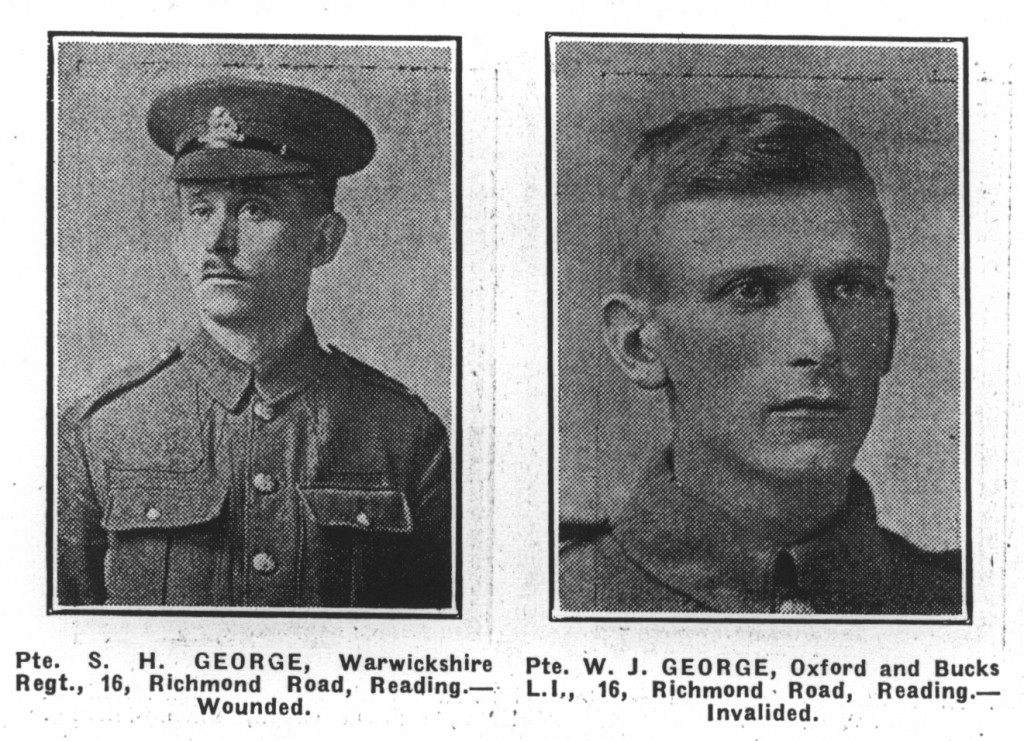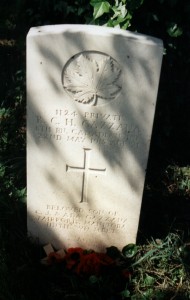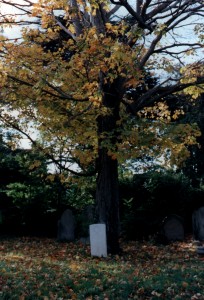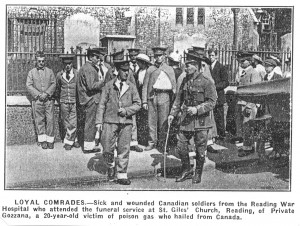Ernest Albert Breadmore
Private 200777
1st/4th Battalion Royal Berkshire Regiment
Division 7
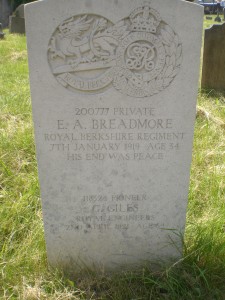 |
Ernest Albert Breadmore, known as Tom was the husband of the Louise Annie Jones (formerly Breadmore), of 21, Dover Street, Reading. He died on 7th January 1919 aged 34 years of phthisis – pulmonary tuberculosis.
In Memoriam The Standard. Jan 10th 1920
“There is a link death cannot sever
Love and remembrance live forever”
Never forgotten by his sorrowing Wife and children.
The 1911 census indicates that Ernest Breadmore was a carter delivering parcels. His war record indicates that he attested for service on 15th September 1914 . He left for France with the battalion on 30th March 1915. After a series of illnesses including bronchitis and trench fever during late 1916 and early 1917 he was discharged as not physically fit in March 1917 and returned to England. It was suggested that he might undertake light duties and home service but unfortunately his illness prevented him from working.
George Giles
Pte. 118324
Labour Coy. Royal Engineers
George Giles, died on 2nd April 1921, aged 59 years. The circumstances of his death are not known.
The two men share a grave and it is assumed that there is a family connection. The grave stands next to a Giles family grave. Both families lived in Brunswick Place, Reading. The grave number is 7.4353 and is marked with a CWGC war pattern headstone bearing two badges.
